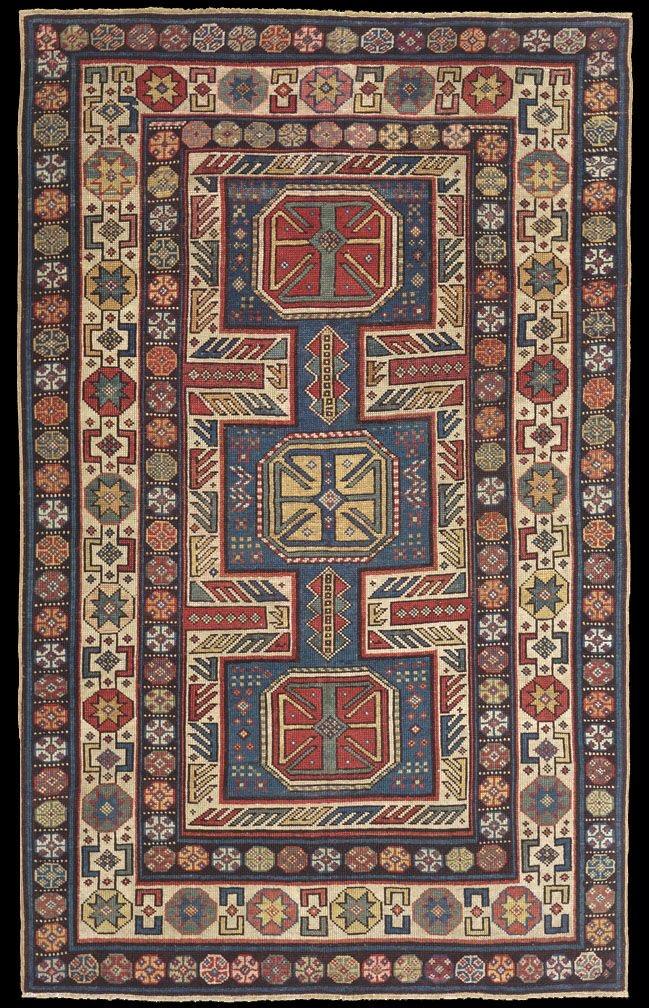Surahany Rugs
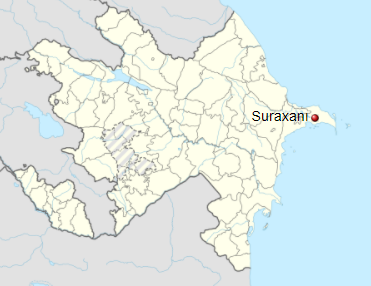
Suraxani (also, Surakhany, Ssurachany and Surakhani) is a settlement and raion of Baku, Azerbaijan Republic. The raion is best known for the Fire Temple of Baku on the northern edge of the town, a castle-like temple and monastery complex known locally as the Atashgah (Persian for fire-temple).
It is a Zoroastrian temple made by Parsi merchants of Gujarat and Mumbai. The complex was built on a pocket of natural gas that once produced flames from natural gas seepage. The local Tat name of the raion is said to be related to “the Persian words ‘Surakh’ (hole) or Surkh/ Sorkh (red) and ‘khan’ (source or fountain).
According to historical sources, before the construction of the Parsi Temple of Fire (Atashgah) in Surakhani at the end of the 18th century, the local people also worshipped at this site because of the ‘seven holes with burning flame’. And thus the name ‘Surakhani’ – holes with burning fountains. Oil and gas production extinguished the holy flames. Though the
temple has been abandoned, the holes are lit now and then with piped gas for tourists.
Rugs and runners made in Suraxani during the 19th century have been branded as ‘Surahany’, ‘Surakhani’ and ‘Surakhany’.
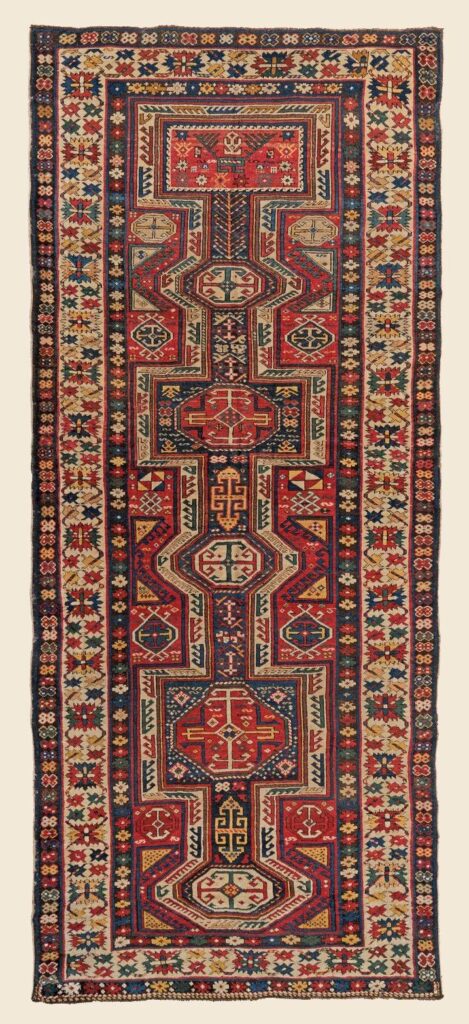
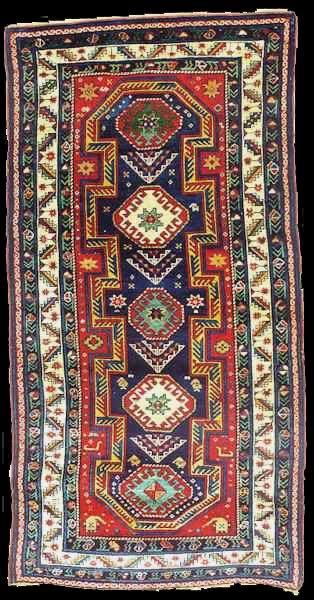
Technical aspects and the structure of Surahany Rugs
Antique Surakhany have an average knot density of 100 knots per square inch. Knots are symmetrical (Turkic). Warps and Piles are woolen. Wefts may be either cotton or wool. Yarns are Z spun. Wefts are mostly white. Carpet sizes are common as well as area rugs. Runners and kellegis (wide runners) are also common.
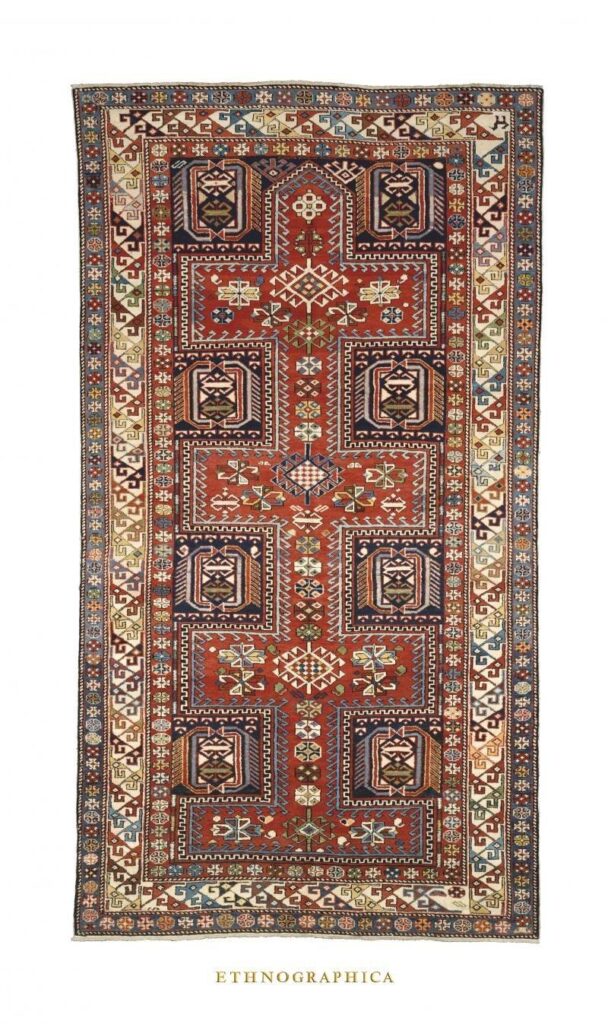

Dyeing and painting of Surahany rugs
Earth tones are frequent on Surakhany palette. Blue shades tend to turquoise. Turquoise and madder rosy, ivory and a deep yellow are dominant on Surakhany palette. Patterns are done with ivory or other white tones on darker ground such as midnight blue or madder red. Ivory borders are common.
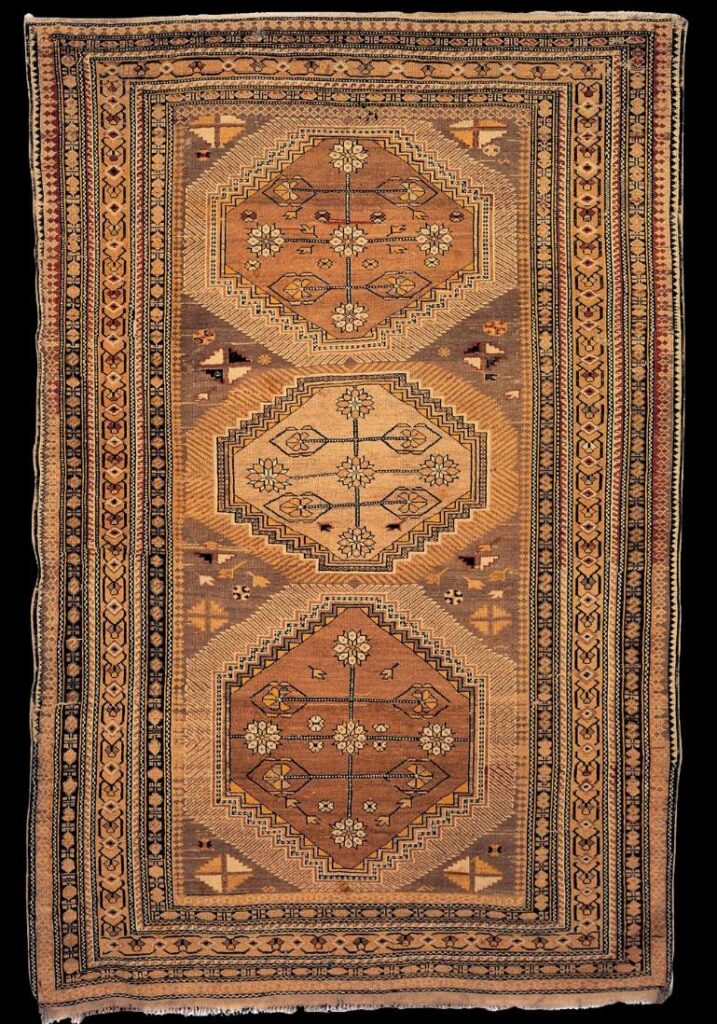
Designs and patterns of the Surahany rugs

Surakhany pieces mostly designed with octagonal and hexagonal medallions appearing in double, triple and multi-medallioned structures. In some runners the medallions are framed in a polygonal frame made of emerged rectangles. . Stepped medallions are also common appearing in double-medallion or pole medallion structures.
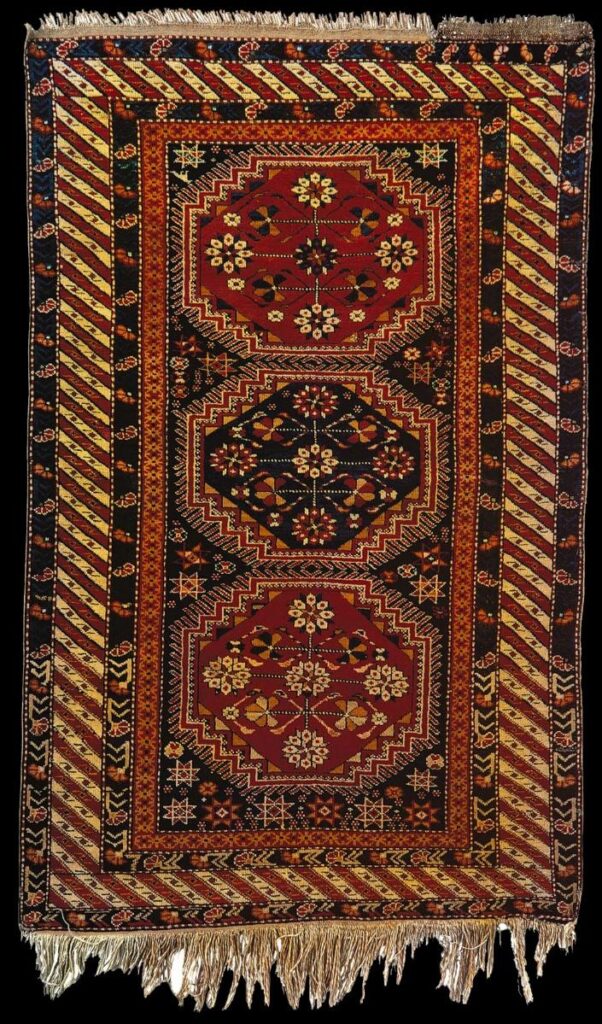
Multiple strips made a type of Surahany borders. Some borders may be filled with boteh (buta) motif. Some borders filled with octagonal and hexagonal motifs similar to the field’s medallions.
